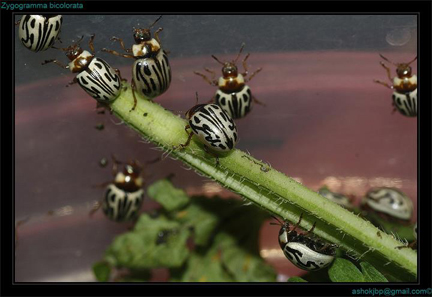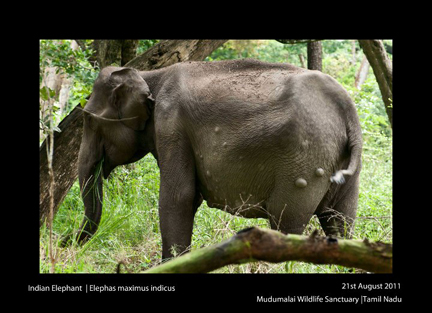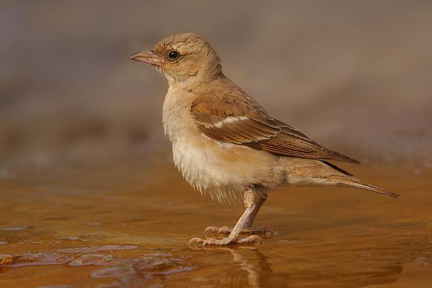Keywords should be more than 3 characters.
Our choice from facebook this month

Bald mynah by Rajeev Chauhan posted in the facebook group "Indian Birds"on August 27, 2011
"Baldness in Mynahs, and subsequent yellow coloration of the skin is being observed in urban centres around the world. One dominating theory as to its cause is that human foods do not allow creation of keratin as much as natural foods (with lots more animal
protein ostensibly). Keratin is a very important requirement for birds to form feathers. Mynahs are species that do not have complete molt - that is, they do not have a period in a year where they lose most of the feathers that regrow over a short period of
time. Molting is gradual and throughout the year. Keratin deficiency can therefore cause serious consequences in terms of feather production."-Gopi Sundar

(Imported Mexican Beetle that feeds on Parthenium)Zygogramma bicolorata
Album:Photos of DiversityIndia
posted by Ashok Sengupta on August 28, 2011
"They can be a boon to our eco-system..Govt is importing them."-Ashok Sengupta
" Has there been studies on this beetle in indian ecology?? They can as well be a disaster!! This again can be a disastrous introduction of an exotic species." -Rishiddh Jhaveri
"The variations in the time taken for biocontrol agents to become abundant in places where introduced, appear to depend upon the climatic differences between the countries of origin and introduction. For example Z. bicolorata took three years in India (Jayanth
and Geetha Bali 1994) and 12 years in Australia, to have any significant impact on parthenium. ( K. Dhileepan et al in the Eleventh Australian Weeds Conference Proceedings)" - Susan Sharma

Elephant-Posted by Hj Srikanth posted in CUPA - Compassion Unlimited Plus Action, Bangalore Photo by Vijay Raman taken at Mudumalai Sanctuary
"Back indents are normal for elephants depending on their age. She does not look like shes out of condition. It could also be caused by a virus but its not likely are there any other elephants with this condition in area? I doubt its infecti...ous probably
benign skin tumors or dermal cysts only way to know for sure would be to biopsy. i have seen many types of skin lumps in elys in Africa and have seen them year after year and they dont seem to be affected by them. But each case is individual and without hands
on examination we wont know for sure."-Chobewildliferescue Botswana
"It appears to be a case of cutaneous filariasis. These are dermatological manifestations due to a nematode which migrates subcutaneously and come out through some of these nodules (usually seen along the belly and sides of abdomen). The link below has another
photo for you to compare.
http://wildlife1.wildlifeinformation.org/S/00dis/Parasitic/Img_HrgicFilaridDermatitis/HHAsEle2532_Filariasis.htm
My fellow vet Dr. Manoharan says it is not uncommon in wild elephants of Mudumalai. This is an young female whose body condition is also not that good. Usually the disease is self limiting and affected animals manage to recover once the monsoon period is over.
Cutaneous filariasis is also common among captive elephants of Eastern Assam. The disease is easily curable but the animal can get the disease again during any of the following seasons. Of course no one treats wild elephants. It is not life threatening threatening,
so no intervention is required. - Dr. N.V.K. Ashraf through Ravi Chellam

The Yellow-throated Sparrow or Chestnut-shouldered Petronia (Petronia xanthocollis)shot in Udaipur
Album:Photos of Indian Birds
Posted by Sharad Agarwal on 31st August 2011
"This is the species that converted Dr. Salim Ali to being an ornithologist. His biography "Fall of a Sparrow" refers to this species that previously had the common name "Yellow-throated Sparrow". -Gopi Sundar
|